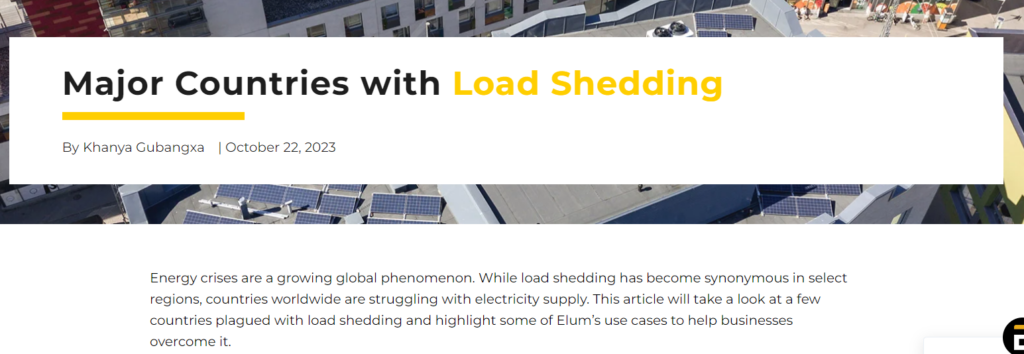Load shedding is a way to distribute demand for electrical power across multiple power sources. In simple words, it means “when power companies reduce electricity consumption by switching off the power supply to groups of customers because the entire system is at risk. This could be because there is a shortage of electricity supply, or to prevent transmission and distribution lines from becoming overloaded.”
Which were the countries which were plagued with load shedding in 2022, post COVID-19?
“In 2022, the state of Rajasthan was forced to introduce load shedding for industrial and residential consumers as the country dealt with the worst power crisis it has seen in years. Parts of India experienced rolling blackouts for up to 10 hours or, in more remote areas, 12 hours a day. Damaging fuel shortages resulted in the shutdown of three power plants in Punjab alone.” Reuters “predicted” that India will continue experiencing widespread blackouts.
2022 has seen South Africa’s “biggest power crisis reaching up to stage six of its rolling blackout system”. Businesses experienced power cuts for up to six hours a day and were warned to expect load shedding for another two to three years. The two main reasons given for load shedding in South Africa were the lack of installed electricity generation capacity that could not meet the demand and that the available energy was far below the demand for electricity, and hence load shedding occurred.
In 2022 going into 2023 Pakistan continued to grapple with prolonged and unscheduled power cuts. The country’s severe electricity crisis hit both rural and urban areas with Karachi experiencing no power for up to 15 hours and Lahore going without power for nearly 12 hours. Although officials had announced a plan to conserve energy, there did not seem to be any reprieve from prolonged darkness. Pakistan was vulnerable to global supply shocks since most of its power plants ran on imported fuel. Rising fuel costs and the post-pandemic demand surge saw its import costs almost double in 2023.
Sri Lanka experienced months of daily power cuts amid an economic crisis, which famously saw thousands of protestors storming the president’s home. The breakdown of a hydropower plant and lack of diesel fuel led to an increase in load shedding episodes. In 2023, Ceylon Electricity Board (CEB) could not meet the country’s electricity demand due to an islandwide lack of electricity supply.
Lebanon is another country that has been plagued with widespread blackouts as a result of an economic crisis that the World Bank dubbed as one of the “most severe crisis episodes globally since the mid-nineteenth century”. Fuel shortages and, according to the New York Times, a “dysfunctional” energy sector were to blame for the power cuts. Similar to the situation in South Africa, power outages became simply a part of Lebanese life. Also in 2022, these issues resulted in state-supplied electricity only coming on for one or two hours a day.

